Tyre (3)
Q3991738Tyre (Phoenician צר, ṣūr, "rock"; Greek Τύρος; Latin Tyrus): port in Phoenicia and one of the main cities in the eastern Mediterranean.
The Hellenistic Age
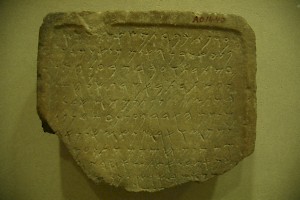
Alexander died in 323, and civil war broke out between his successors, the "Diadochi". During a conference in Babylon, Phoenicia was first awarded to one Laomedon. The first round of civil wars was between Perdiccas, the champion of the unity of Alexander's empire, and Ptolemy, who aimed at independence, ruling from Alexandria in Egypt. In the spring of 320, it became clear that Perdiccas' ambitions were unrealistic, and after he had been killed, his admiral Attalus seized Tyre.note In the late summer, during the Triparadisus Conference (perhaps at Baalbek), it became inevitable that the Empire would be divided. Immediately, Ptolemy seized the Phoenician towns. Together with Cyprus and the Cyrenaica, they were a protective belt around his main possession, Egypt.
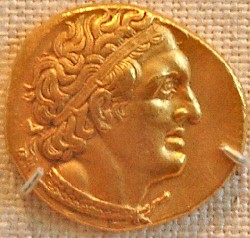
This was, however, a violation of the Triparadisus agreement, and it was obvious that another general, Antigonus the One-Eyed, would one day try to seize the important port for himself. In the Second Diadoch War (318-316) he got rid of some of his main opponents, and in 315, he attacked Ptolemy's possessions in Asia. In the early summer of 315, the siege of Tyre started; it fell after a long siege (source). Still, Ptolemy continued to claim the city.
In 301, Antigonus lost his life during the battle of Ipsus. The victors awarded Phoenicia to Seleucus I Nicator, but Antigonus' son Demetrius managed to keep Sidon and Tyre.note In the end, it was Ptolemy who recaptured the city in 290.
Tyre was still an important town, but it had, in the meantime, lost territory. More importantly, it was now a Greek city, with magistrates, a council, and a people's assembly. Similar institutions must have existed in the Phoenician period, but we no longer hear about the city's king. The city was also redesigned as a Greek city, with a colonnaded street and the "square building" (which may or may not have been used as assembly hall for the magistrates or council).
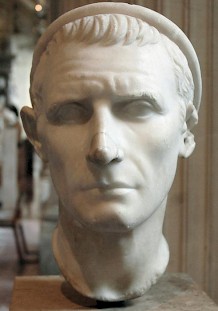
The descendants of Ptolemy and the descendants of Seleucus, the Ptolemies and Seleucids, continued to quarrel about the Ptolemaic possessions in Asia ("Coele Syria"). At first, the Ptolemies were most successful, and the Zeno Papyri prove that Tyre was part of the Ptolemaic economic system, but in the Fifth Syrian War (202-195), the Seleucid king Antiochus III the Great expelled the Ptolemies and converted Syria, Phoenicia, and Palestine into Seleucid provinces. One remarkable result was that Hannibal, when he was forced to leave Carthage and decided to go to Carthage's mother-city Tyre, arrived in the Seleucid Empire.note During his last years, he would use the Tyrian fleet to fight for Antiochus III.note
Tyre was now one of the main Seleucid centers, with a large trade network, which included Greek towns like Delphi, Delos, and Teos. This was the city of the poets Antipater and Meleager and the Stoic philosophers Antipater and Apollonius. Every five years, there was an official festival, coins were minted in Tyre, and when king Antiochus IV Epiphanes decreed the persecution of the Jews, the Tyrians were enthusiastic.note Royal pretenders sought the support of Tyre: in 152, for example, king Alexander Balas gave the city the right to offer asylum. In 125, when king Demetrius II Nicator had ran into troubles, he believed he could find help in Tyre - only to be killed. Almost immediately after, Tyre declared itself independent, just like other former Seleucid possessions (e.g., Judaea). The coins of independent Tyre were to be the standard currency in the eastern Mediterranean for almost two centuries.
Roman City
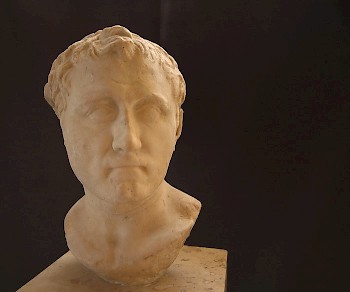
Rome arrived on the scene in 64 BCE, when general Pompey the Great subdued the last remains of the Seleucid Empire. In an inscription from Tyre that can be dated to 60,note his deputy Marcus Aemilius Scaurus is praised as the patronus of the city, suggesting that he defined the relation between Rome and Tyre, which was recognized as an independent ally, as the Greek scientist Strabo of Amasia mentions.note He also describes the source of Tyre's wealth: the production of purple.
During the Roman civil wars, a Roman knight named Quintus Caecilius Bassus, using Tyre as his headquarters, built a private army, expanded his influence to Apamea in the valley of the Orontes, and finally joined - after the assassination of Julius Caesar - the leader of the republican forces, Gaius Cassius Longinus.note Tyre now received a sole ruler, a man name Marion, who immediately started to invade the Jewish state in the south, adding three forts in Galilee to the Tyrian possessions.
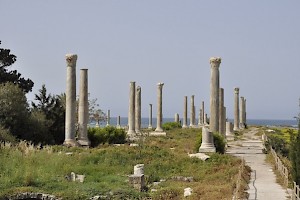
According to Flavius Josephus, a young Jewish general named Herod pushed back Marion, and made sure that the opponents of Cassius, Mark Antony, and Octavian, could count on support in the east.note In these chaotic years, the Parthians invaded Syria and occupied most of it, but Tyre resisted the enemy.note and was left out of the territories that Mark Antony donated to Cleopatra.
Tyre benefited from Roman rule. Trade was easier than it had been for a long time, and the city expanded. Pliny the Elder states that the best-quality Asian purple is found at Tyre.note The cemetery of Al-Bass, with countless sarcophagi made out of imported Proconessian marble, is evidence for the flourishing trade. The large road that runs through this cemetery, was paved in the first century CE.
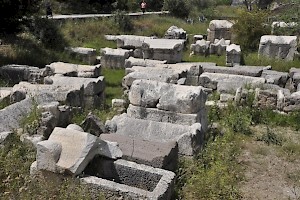
From a casual remark in the Acts of the Apostles,note we learn that Tyre depended on Galilee for its food supply, and that in 44 CE, Tyre, still an independent city, was almost at war with the Jewish king Herod Agrippa. The connections between the Phoenician city and the Jews were close: Herod, who was made king by Mark Antony, built several monuments in Tyre. It comes as no surprise that there were Jews living in Tyre, and that Jesus visited the placenote and it may have been the place where he cured a woman.note Later, Paul visited the Christian community of Tyre.note On the other hand, we learn about pogroms at the beginning of the Jewish War of 66, which prove that the relations between Jews and Tyrians could take a turn for the worse.
Tyre was a center of Greek learning. Among its sons were the stoic philosopher Euphrates, the geographer Marinus, the orator Paul, and bishop Cassius, who played a role in the debate about the Easter date.note Tyre was also the home town of the most famous sophists of Antiquity, Hadrian. He was called to occupy the imperial chair of oratory in Athens, where he started his inaugural address with the modest remark that once again, letters had come from Phoenicia.note Marcus Aurelius promoted him to the chair of Greek oratory in Rome, where even people who did not understand Greek, visited the odeon to visit Hadrian's speeches.note
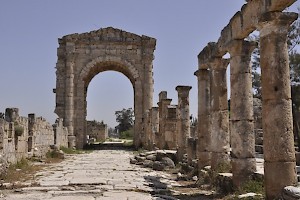
This was also the age of the great building projects. The Hippodrome, the City Baths, the Palaestra, an honorific arch dedicated to the emperor Hadrian, the pavement of the Mosaic Road, all these monuments can be dated to the second century. The emperor Hadrian also awarded Tyre the title of metropolis, "mother city". The gesture is significant, because it meant that by now, Tyre's official independance had become a dead letter.
After the death of the emperor Commodus, the Roman Empire fell victim to a civil war, in which the main cities in the Near East (Antioch, Berytus, and Sidon for example) supported Pescennius Niger.note Tyre and Laodicea alone supported another candidate, Septimius Severus, and suffered terribly: Niger sent Moorish javelin men and archers to sack the city.
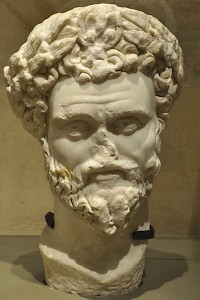
However, Niger lost the civil war, and Septimius Severus knew how to show his gratitude. When he reorganized Syria, he made Tyre the capital of Syria Phoenice, a province that was much larger the area traditionally called Phoenicia: for example, cities like Emesa and Palmyra and the base of the Third Legion Gallica in Raphanaea were now subject to governor in Tyre. Veterans of this military unit were settled in the new provincial capital, which also received the rank of colonia.note Some of these privileges were briefly revoked by Heliogabalus (r.218-222) but restored by Severus Alexander (r.222-235).
Because of these privileges, the city continued to flourish, in spite of the fact that the third century was, for the Roman Empire, an age of crisis. The jurist Ulpian (c.270-228), and the philosopher Porphyry (234-c.303) were both from Tyre, while Philostratus may have lived there for some time. Although the main building projects had by now been finished, there were still repair works. A milestone from the reign of Philip the Arab (244-249) is evidence of road construction. The Square Building was completely rebuilt in the third century.
Late Antiquity
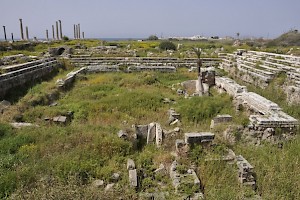
During the reign of the emperor Decius, Christians were persecuted, and Eusebius of Caesarea mentions that an important Christian teacher, Origen, suffered in jail.note Nevertheless, the persecution was terminated when Decius died. The Diocletianic persecution, which started in 303, was more serious. An official letter by the emperor Maximinus Daia has survived in Eusebius' Ecclesiastical History.note This author also mentions the martyrdom of bishop Tyrannion,note offers an eye witness account of the execution of five Egyptians in the Tyrian circus,note and mentions the death of a youth named Ulpian, who, remarkably, suffered the traditional punishment for parricide.note
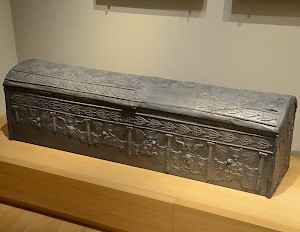
However, in 311, the emperor Galerius put an end to the persecutions, and bishop Paulinus could build a large church in Tyre. His successor Zeno attended the Council of Nicaea in 325. Ten years later, the Synod of Tyre deposed Athanasius of Alexandria: one of the most notorious decisions in the not always harmonious history of Christianity.
In spite of these tensions and quarels, the city continued to prosper. Eusebius seems to suggest that by now, the production of purple had become a state enterprisenote The text known as the Expositio Totius Mundi praises Tyre's hippodrome and theater.
In the fourth century, the city suffered from a natural disaster, perhaps the tsunami of 365, but the city survived. It was only at the end of this century, when a tribe of Huns broke through, that the Tyrians had to consider crisis measures. Jerome mentions that they considered evacuating their possessions on the mainland,note but we do not know what happened exactly. In any case, things were changing. The central government decided to convert the military part of Syria Phoenice into an independent province, Phoenice Libanesia. Tyre remained the capital of the remainder, now called Phoenice Maritima.
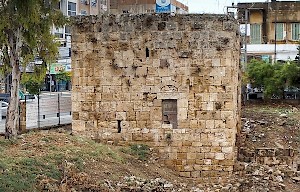
There is little information from this age. The Roman Empire started to disintegrate, and in the end, its western provinces were lost. However, the eastern half survived, with Constantinople as its capital; historians call it the Byzantine Empire. But Tyre is, for about a century, absent from our sources. In 501, it suffered from a terrible earthquake, and it would seem that the Egyptian Harbor was now abandoned, but the city recovered: later in the sixth century, Procopius mentions the existence of silk factoriesnote and still later, the Christian author Antoninus of Piacenza describes the ruins of Aradus, Byblos, Berytus, and Sidon, and mentions that the Tyrians were rich but lived badly, in a greater luxury than he could express, and apparently benefiting from the profits of the production of silk and other textiles.note
Nevertheless, change was coming. At the beginning of the seventh century, the Sasanian king Khusrau II invaded Syria and destroyed many cities. This may or may not have been the occasion on which the "Tower of Hiram" was built, a strong military tower that protected a fresh water spring on the former island.
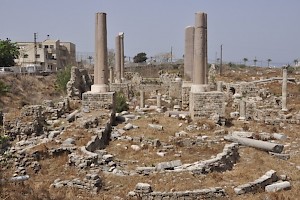
Tyre appears to have suffered indirectly. In his Annals, Eutychius, a tenth-century patriarch of Alexandria, has recorded that Jews, supporting the Persian invaders, attacked the Tyrian churches.note The city may again have recovered, but the chaos in Syria was great and offered an opportunity to the Arabs, who in 634 defeated the Byzantine forces at the river Yarmuk, and captured Tyre in the next year.
The city now became the naval base of the Umayyad caliphs, who also repaired Tyre's walls. As long as Damascus was the capital of the world of Islam, Tyre continued to flourish. However, after the Abbasid caliphs had moved the capital to Bagdad, the decline started. Nevertheless, Tyre survived. In the 1180s, the Andalusian Muslim pilgrim Ibn Jubayr visited Tyre, and marveled greatly at the city's water reservoirs, which had, by now, been in use for more than a millennium. The Crusaders used them as well, until in 1291 the Mamluk sultan Al-Ashraf Khalil captured and destroyed the city.